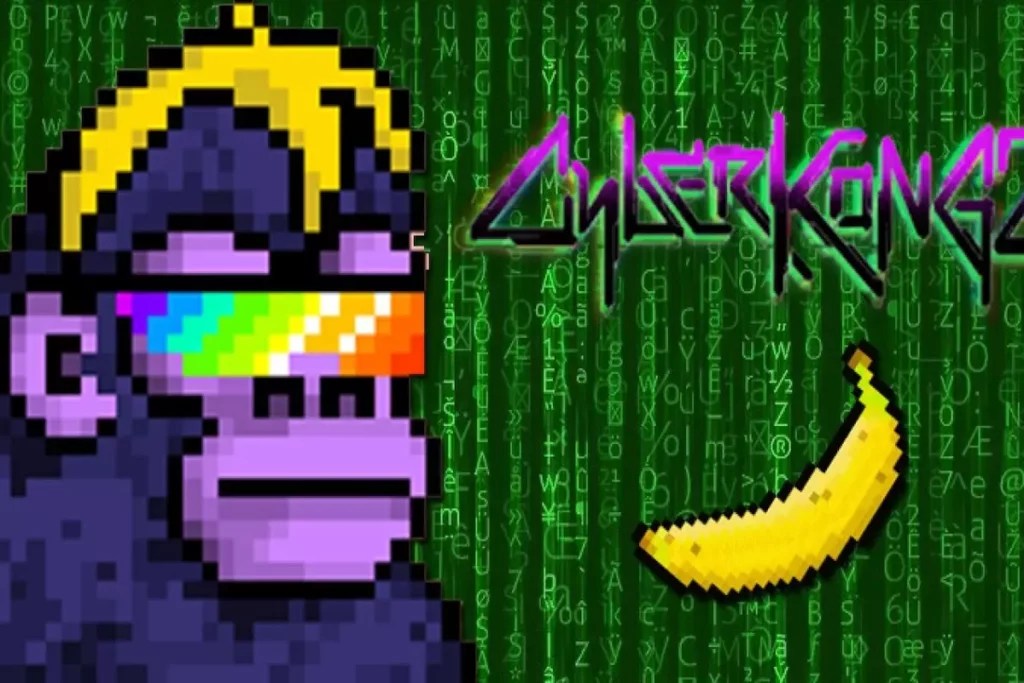On October 10, 2023, the U.S. Securities and Exchange Commission (SEC) issued a Wells notice to CyberKongz, a prominent player in the rapidly evolving world of NFTs and Web3 gaming. This communication carries profound implications, signaling that the SEC views certain NFTs as securities and suggesting that regulatory oversight may be on the horizon for the entire sector. For the gaming community, this is not just another regulatory hurdle — it represents a pivotal moment in the classification and governance of digital assets.
The context for the Wells notice can be traced back to April 2021, when CyberKongz launched its Genesis Kongs NFTs. While the creators have maintained that the transaction constituted a “contract migration” rather than a typical sale, the SEC’s response indicates a broader pattern of scrutiny targeting these digital assets. This situation exemplifies the shifting landscape of NFTs within the gaming industry and poses critical questions regarding functionality, compliance, and long-term viability.
The Ripple Effects on the Gaming Ecosystem
The implications of classifying NFTs as securities stretch far beyond the CyberKongz project itself; they present a potential paradigm shift across the blockchain gaming ecosystem. If the SEC establishes NFTs as securities, fundamental aspects of tokenomics, fundraising strategies, and community governance will undergo serious changes. Companies involved in Web3 gaming may need to reevaluate their models to comply with stringent securities regulations, which could inhibit creativity and experimentation within the space.
Industry leaders have started voicing their concerns and opinions, underlining the importance of regulatory clarity. For instance, Axie Infinity has openly supported CyberKongz, suggesting that comprehensive regulatory guidelines can lead to a more stable environment for blockchain gaming projects. This support highlights industry camaraderie but also indicates a collective desire for structured governance to safeguard innovation while providing necessary consumer protections.
Moreover, the timeline is critical for CyberKongz; they have only 30 days to formulate a response to the Wells notice. The manner in which they address this challenge will potentially reshape the broader discussions concerning digital gaming assets and the regulatory landscape they will each have to navigate.
While the SEC’s stance has garnered significant attention, it is essential to recognize that the regulatory environment for NFTs varies dramatically across the globe. In Europe, the introduction of the Markets in Crypto-Assets (MiCA) framework aims to provide clarity by potentially defining NFTs and their regulatory parameters more accurately. While some European regulators advocate for less oversight, others emphasize the need for proper regulatory measures, particularly for NFTs that function as investment vehicles.
In Asia, countries like Singapore and Hong Kong are adopting pro-innovation stances, promoting responsible experimentation with NFTs while keeping a vigilant eye on potential fraudulent activities. Addressing the intricate balance between fostering innovation and ensuring consumer safety remains a critical challenge for regulators in this region.
Meanwhile, in Latin America and Africa, the regulatory approach is comparatively relaxed, often viewing NFTs as catalysts for financial inclusion and economic advancement. Even as these regions mature into crypto hubs, local regulators are closely observing potential risks and are likely to draw influences from the evolving laws in the U.S. and Europe.
This mosaic of regulatory approaches poses a complex web of challenges for companies like CyberKongz aiming to operate in multiple jurisdictions. In this environment, strategic compliance planning is not just advisable; it may become an essential component for long-term success.
As potential regulations loom, the impact on the industry may lead to stricter compliance requirements for emerging projects. As a consequence, traditional practices related to token distribution, community governance, and user incentives will likely undergo radical rethinking. The startup ethos of experimentation, which has propelled the sector thus far, may need to align with a new framework that prioritizes transparency and consumer protection.
Fundamentally, blockchain compliance is about more than just evading legal issues; it also involves building trust among gamers and investors. Establishing clear compliance standards could help shield projects from regulatory scrutiny, fostering a healthier ecosystem. Adopting robust Anti-Money Laundering (AML) and Know Your Customer (KYC) protocols will become imperative for ensuring that platforms and players operate within a safe and secure environment.
The future of blockchain gaming hinges on collaboration. Stakeholders—including gaming companies, regulators, and consumer protection agencies—must work together to create a robust framework that allows innovation to thrive while ensuring that protections for investors and players remain uncompromised. Through such collaboration, a more transparent, accountable, and sustainable blockchain gaming industry can emerge stronger from regulatory challenges like the CyberKongz Wells notice.
The CyberKongz Wells notice is a watershed moment that underscores the urgent need for compliance, transparency, and regulatory awareness within the Web3 gaming landscape. As the digital asset space evolves, the response to this case will undoubtedly set long-lasting precedents for future NFT regulations. By remaining proactive and attuned to global regulatory trends, blockchain gaming projects can navigate this complex terrain effectively—ensuring that they continue to deliver innovative and engaging experiences to players worldwide.



















Leave a Reply